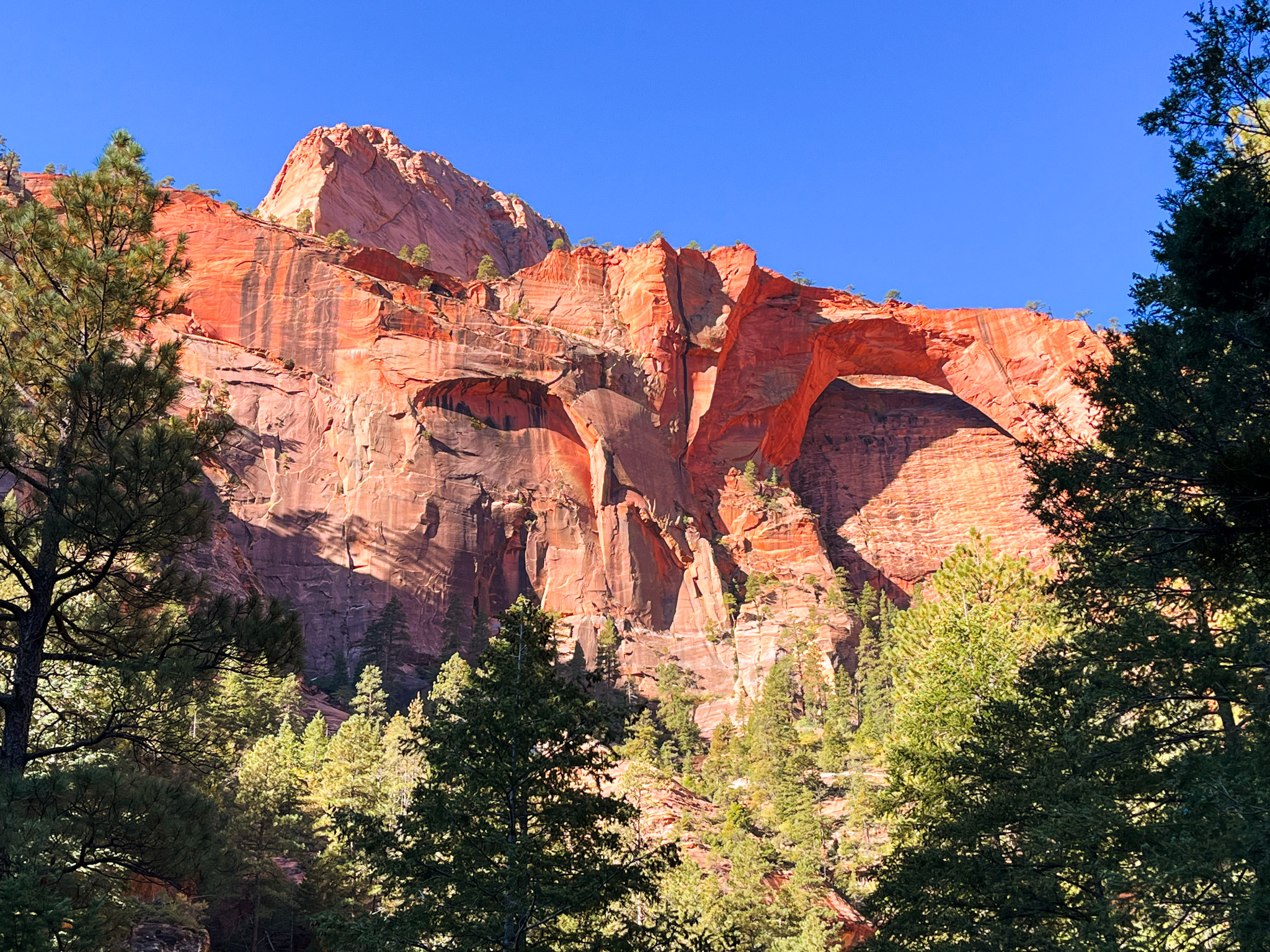

KOLOB ARCH TRAIL, ZION NATIONAL PARK
Where: Southwestern Utah (closest city: Cedar City)
Why Go: Visit one of the largest arches in the world, a hidden gem in Zion
Hike Stats: 13.9 miles and 1,700 feet elevation gain
How Long to Visit: 1 – 3 days
When to Go: Spring or fall
What to Bring: Downloaded trail map, day hiking or backpacking gear
In this post, I’ll be covering a hidden gem in Zion National Park: the Kolob Arch Trail. This hike leads you to one of the largest freestanding arches in the world. Whether you choose to visit the arch in a day hike or as part of a backpacking adventure, you’ll be treated to dramatic cliffs, picturesque finger canyons, and a scenic creek that follows the trail. In autumn, the landscape comes alive with vibrant foliage, adding an extra layer of beauty to this already magnificent trek.
Even better, the Kolob Canyons are a lesser-visited part of Zion, meaning you’ll enjoy this trail without the usual crowds. In this guide to the Kolob Arch Trail in Zion National Park, I’ll provide all the information you need to plan your visit.
If you need a refresher, check out my guide to day hiking. For more places to explore in Utah, browse my Utah destination guides.
Related Articles:
Zion Canyon Hikes
Angels Landing and West Rim Trail
Watchman Trail
Observation Point
Checkerboard Mesa
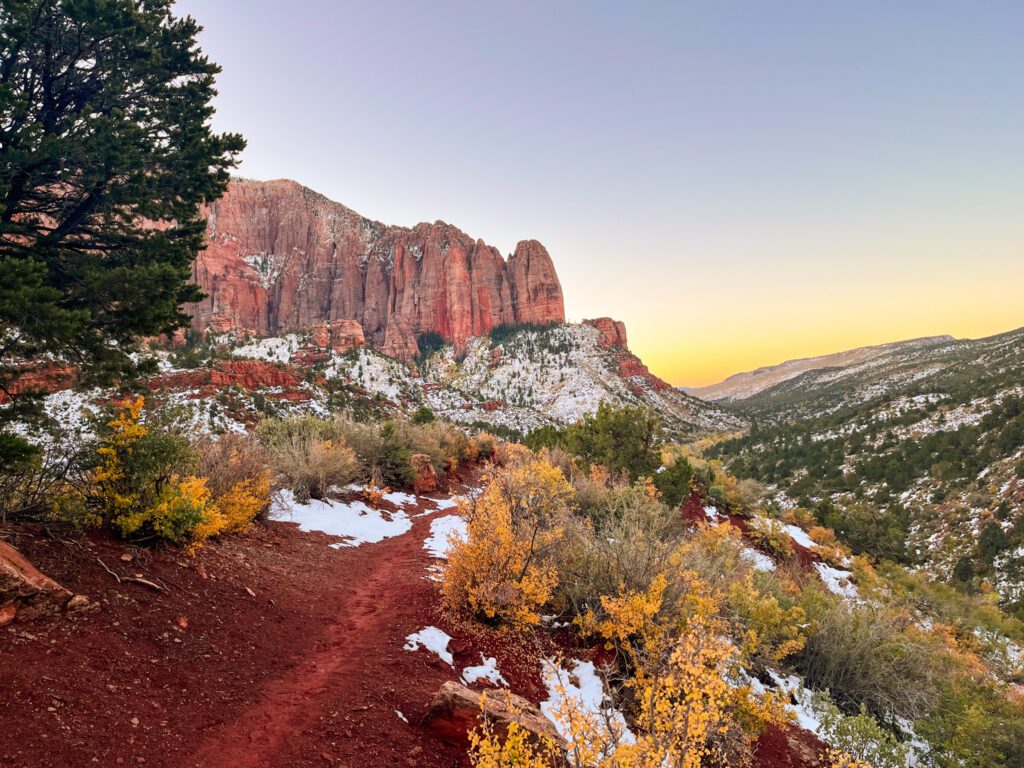

Kolob Arch Facts
The Kolob Arch is a large freestanding arch perched atop a cliff. It is the sixth-longest natural arch in the world, with a span of 287 feet and a thickness of 75 feet. The arch is composed of Navajo sandstone and was created by erosion.
Accurately measuring the Kolob Arch proved to be a formidable task and was not achieved until 2006. Due to the arch’s location in protected wilderness, no motorized vehicles were permitted in the area. All measuring equipment had to be transported via a 14 mile round-trip hike. Additionally, the process entailed a technical climb up the cliff to obtain precise measurements.
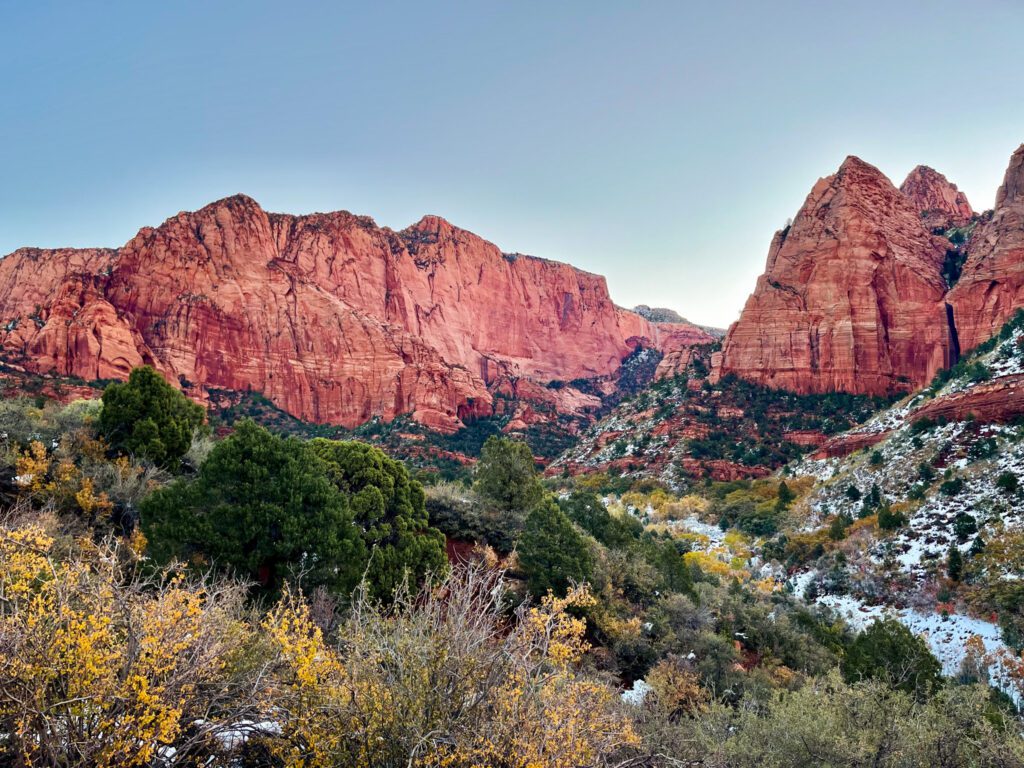

Kolob Arch Map and Trail Information
You can complete La Verkin Creek Trail to Kolob Arch (also known as the Lee Pass Trail) in a single day if you’re comfortable hiking long distances. The out-and-back route is 13.9 miles, with 1,669 feet elevation gain. The hike’s “difficult” rating is primarily due to its length rather than strenuous terrain.
The Kolob Arch hike is quite exposed, and at times the terrain is sandy. The trail includes several water crossings; during my visit in mid-October I found these very straightforward, but they could be challenging in spring or during periods of high water flow. Overall, the Kolob Arch trail is very well-maintained and easy to follow.
Kolob Arch Trail Guide
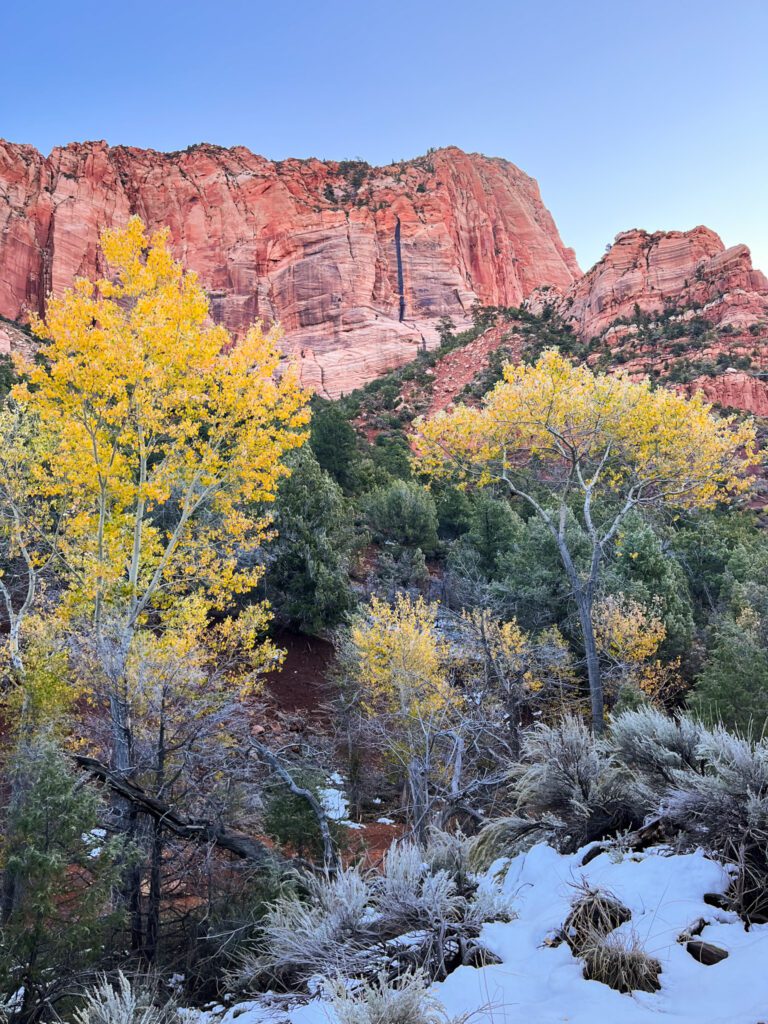

The entire trail offers stunning views of finger canyons and dramatic cliffs. Even if you can’t complete the full hike to the arch, I still recommend hiking the initial few miles of the trail!
The first 4.5 miles of the Kolob Arch hike are a gentle descent alongside Timber Creek. In the fall, this area is full of vibrant foliage. The remaining 2.4 miles follow La Verkin Creek and are slightly inclined.
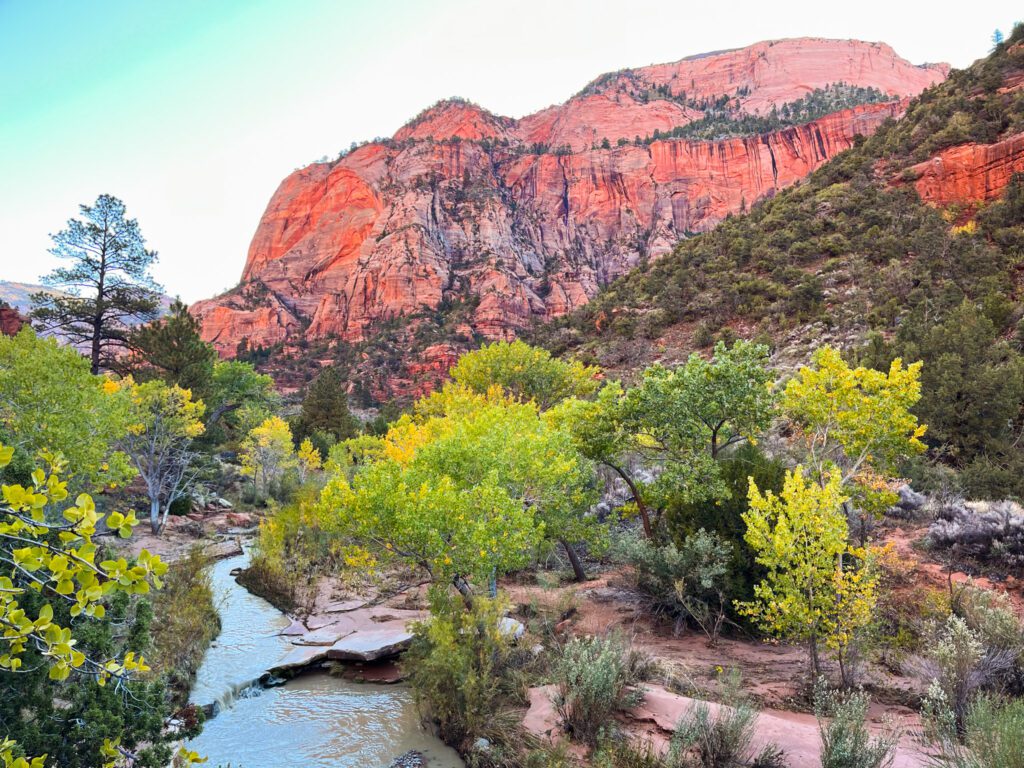

After hiking a total of 6.4 miles, you’ll reach the junction where you’ll need to turn left onto the Kolob Arch Trail. This final half-mile section involves moderately challenging creek crossings, scrambling around boulders, navigating fallen trees, and other obstacles.
The Kolob Arch rests high on a cliff, and the viewpoint is approximately 0.25 miles away from the arch itself. Please refrain from veering off the trail in an attempt to get a closer look. There is a pile of large boulders next to the trail that you can scramble up for a better view of the arch.
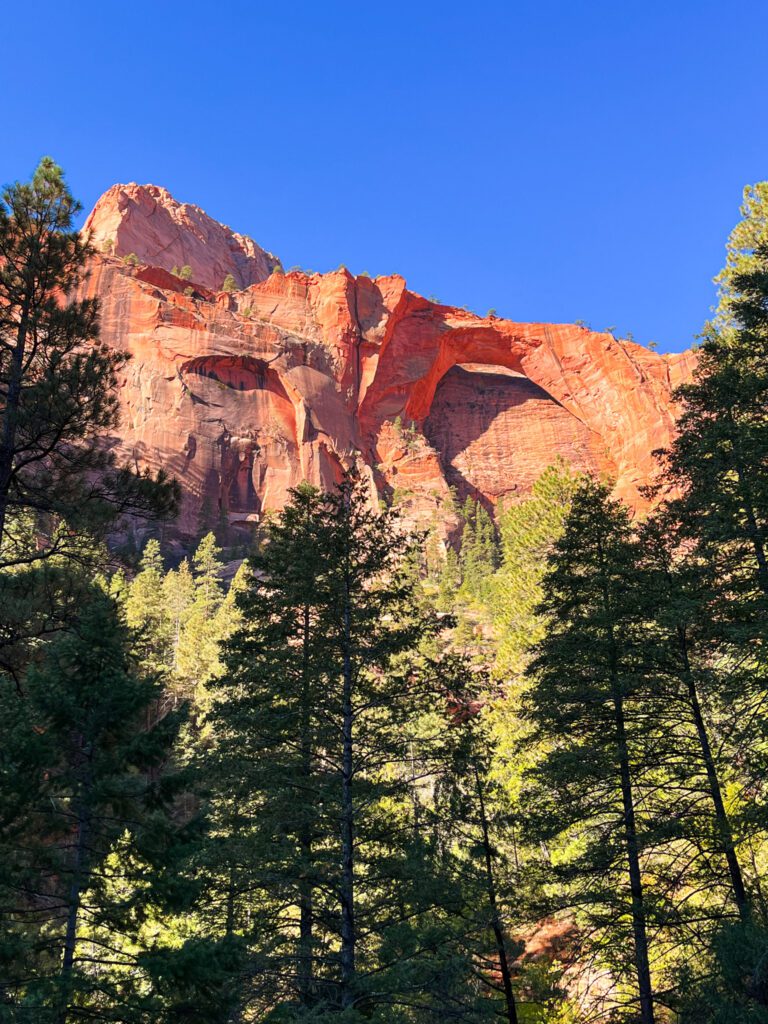

Variations on the Kolob Arch Hike
The Hop Valley Trail is another way to reach Kolob Arch. This route is 14.6 mi with 1,911 ft elevation gain, and the terrain is more sandy and exposed than La Verkin Creek Trail.
If you’re planning a Kolob Canyons camping trip and have more time to spare, check out Bear Trap Canyon. You’ll first need to get to Campsite 13, which is 2 miles past the junction of La Verkin Trail and the Kolob Arch Trail. Beyond Campsite 13, you can continue along the 0.25 mile long Bear Trap Canyon, which is a slot canyon. At the end of the canyon you’ll find a 20 ft waterfall.
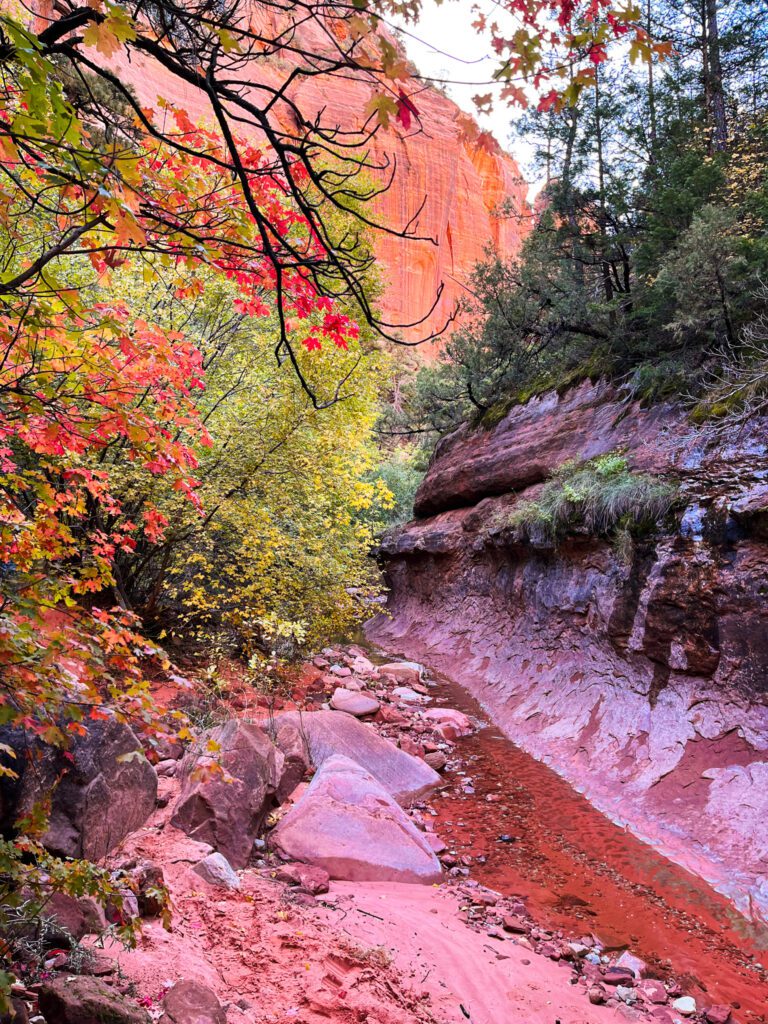

Useful Tips
- Limited phone service. Expect limited to no phone service on the Kolob Arch Trail and on the drive to the parking lot. Download Google Maps of the area and hiking trail GPS information in advance.
- Beat the heat. Start hiking early in the morning. If you can, visit in spring or fall over summer. La Verkin Creek Trail to Kolob Arch can get hot since it is very exposed.
- Leave no trace. Let’s make sure this place stays beautiful!
- Check trail conditions. The trail is open year-round, but be mindful of snow in winter and muddy conditions after periods of rain.
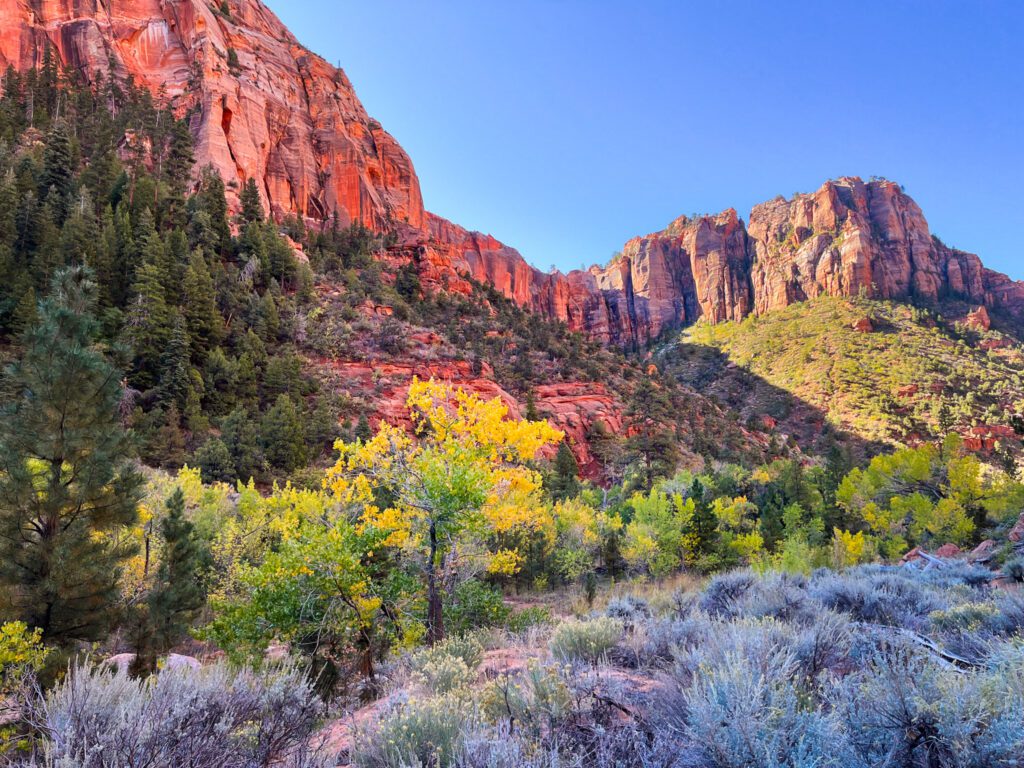

Zion National Park Weather and When to Go
Aim to visit Zion National Park in spring or fall. Summers are unbearably hot and pose risks of flash floods. The Kolob Arch trail is very exposed and likely will not be pleasant to hike in the summer heat. Arrive at the trailhead early, to start hiking before it gets too hot and also to secure a parking spot. Check the National Park Services pages for more information on weather in Zion.
Although you probably won’t have to worry about crowds on the Kolob Arch trail, be mindful of high season when planning your overall Zion trip. Zion sees its highest influx of visitors between April and September. If possible, avoid visiting Zion National Park on weekends and holidays. Shoulder seasons (for example, March or October) are great times to visit to avoid crowds. My last visit was in mid-October, and I appreciated the cooler temperatures and vibrant fall foliage.
If you’re planning a spring trip to Zion, keep in mind that higher elevation trails may still have lingering snow and ice. The Narrows hike may also close in spring due to high water levels.
Zion is open year-round, and it’s also possible to visit during winter. While the experience will be much quieter, be prepared to drive in winter conditions since the shuttle doesn’t operate for most of winter. Also, expect snow and ice on higher elevation trails, requiring specialized hiking gear. The road to the Kolob Arch trailhead (Kolob Terrace Road) usually closes several months per year due to snow; check current conditions before heading out. Also be aware that there may be snow on the trail in winter, as well as mud after periods of rain.
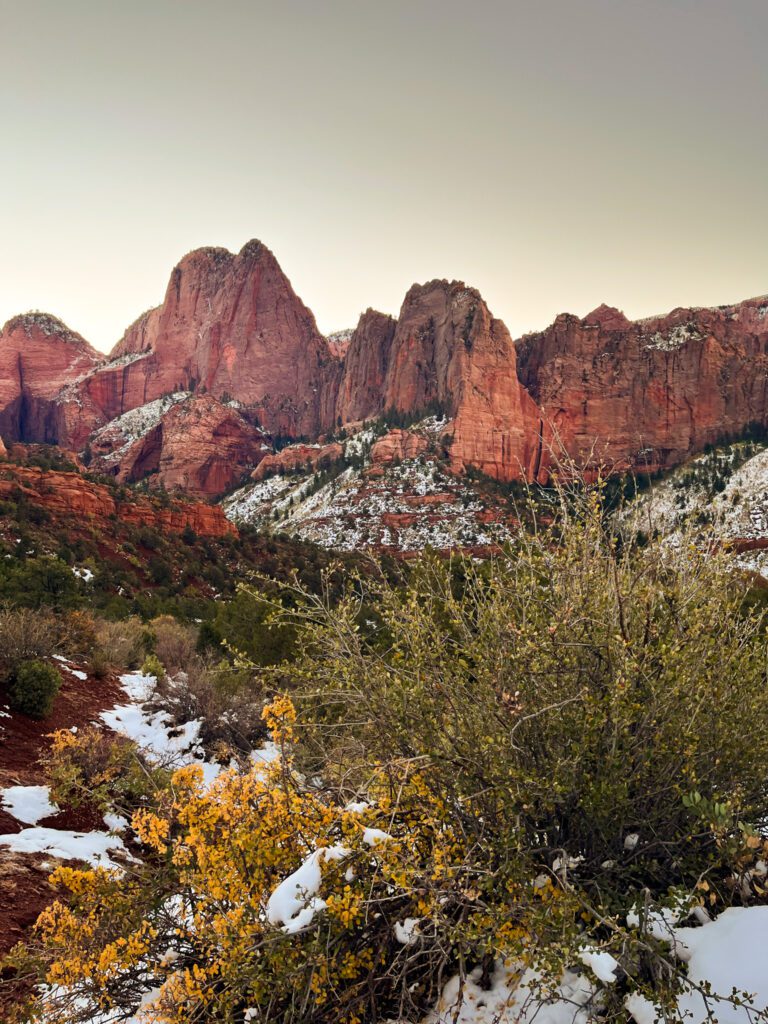

Zion National Park Information
Zion National Park entrance is $35 per car, and you’ll pay at the Kolob Canyons Visitor Center on the way to the trailhead. You can use your US National parks pass or purchase one there for $80.
There are no specific park hours. Dogs are not permitted on Kolob Canyon hikes. Although permits are required for other trails in the park, you don’t need one to hike to the Kolob Arch.
Kolob Canyons Directions and Parking
Zion National Park is located in Southwestern Utah. The Kolob Arch trail is in the Kolob Canyons district of Zion, which is northwest of Zion Canyon. Zion Canyon is the most famous (and crowded) part of the park, and it’s an hour drive from there to Kolob Canyons. The closest town to Kolob Canyons is Cedar City.
There’s no shuttle to get to the Kolob Canyon hikes, so you’ll need a car to navigate around this area of the park. The Kolob Arch parking lot is located at “Lee Pass Trailhead”.
Be aware that the road to the Kolob Arch trailhead (Kolob Terrace Road) usually closes several months per year due to snow; check current conditions before heading out.
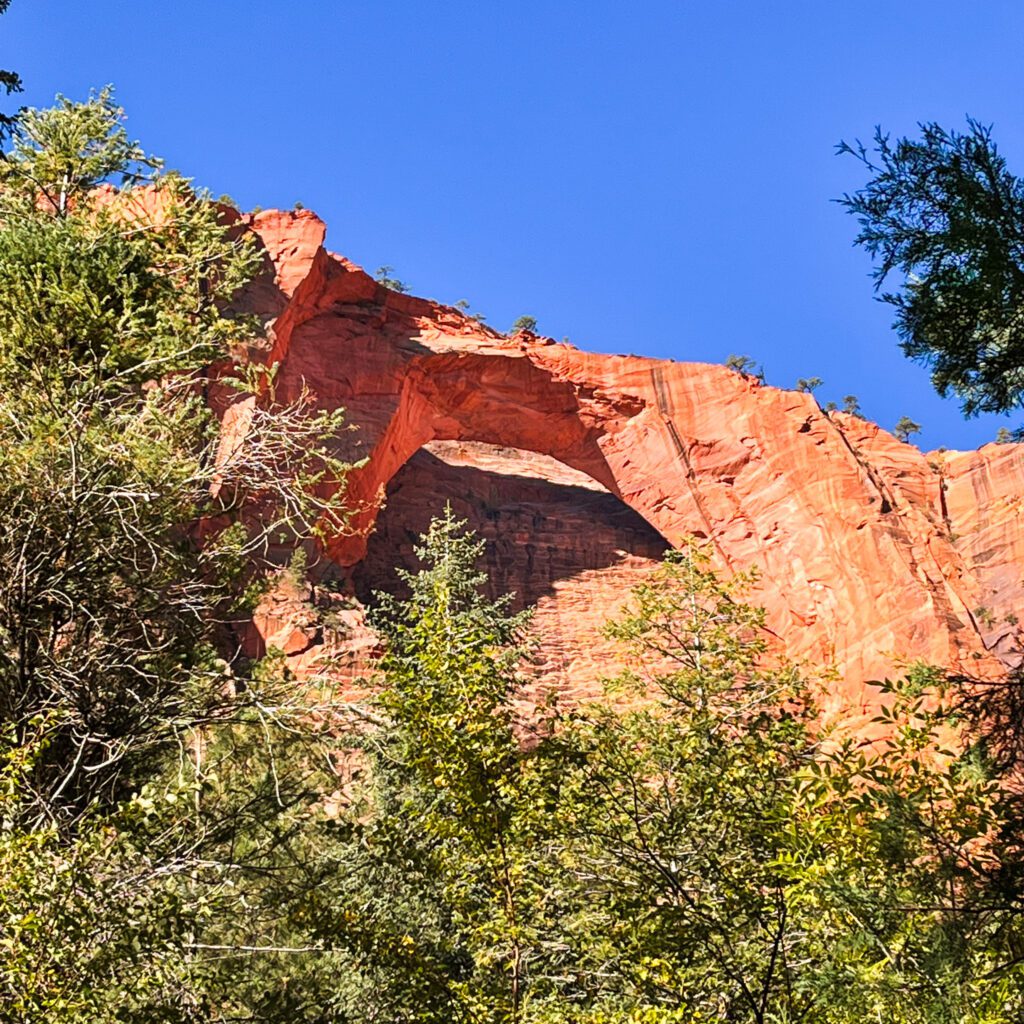

What to Bring to Hike to Kolob Arch
For a full list of what to bring to Kolob Arch, refer to my complete day hiking and backpacking checklists. For this hike I would stress the following:
- Trail Map. Download the map for offline navigation.
- Day Hiking Backpack or Backpacking Pack (Women’s, Men’s). Invest in a high-quality and durable pack that will last for years!
- Hiking Shoes. Women’s, Men’s. I do not recommend running or general athletic shoes for this hike. Their lack of traction will cause you to slip.
- Hiking Socks. Women’s, Men’s. Wool is essential to keep your feet dry and blister-free.
- Hiking Pants. Women’s, Men’s. I love these pants because they are lightweight, durable, and have pockets.
- Hiking T-Shirt. Women’s, Men’s. Quick-drying T-Shirts are ideal. Tank tops will cause your skin to rub uncomfortably against your backpack straps.
- Lightweight Long-Sleeve Shirt. Women’s, Men’s. This is the best way to protect yourself from the sun and mosquitos.
- Hat. Protect yourself from the sun on this exposed hike.
- Sunscreen.
- Lip Balm with SPF.
- Mosquito spray. I love this all-natural one because it’s very effective and doesn’t contain harmful chemicals.
- Mosquito head net. Mosquitos can be unbearable in some seasons. I use this to prevent them from getting in my eyes and mouth or biting my face.
- Water in a Reservoir or Bottle. Bring a lot of water – this is a long and hot hike. Water from La Verkin Creek is not safe to drink, even after filtering.
- Electrolytes. These help prevent dehydration and fatigue, especially on strenuous hikes in hot weather.
- Snacks, Packed Lunch
- Portable Charger and Cable. Be prepared if your phone battery dies.
- Headlamp and Spare Batteries. Whether or not you plan to camp, this is a safety essential.
- Garmin inReach (optional). Sends your GPS coordinates and calls for help in emergency situations.
- First-Aid Kit
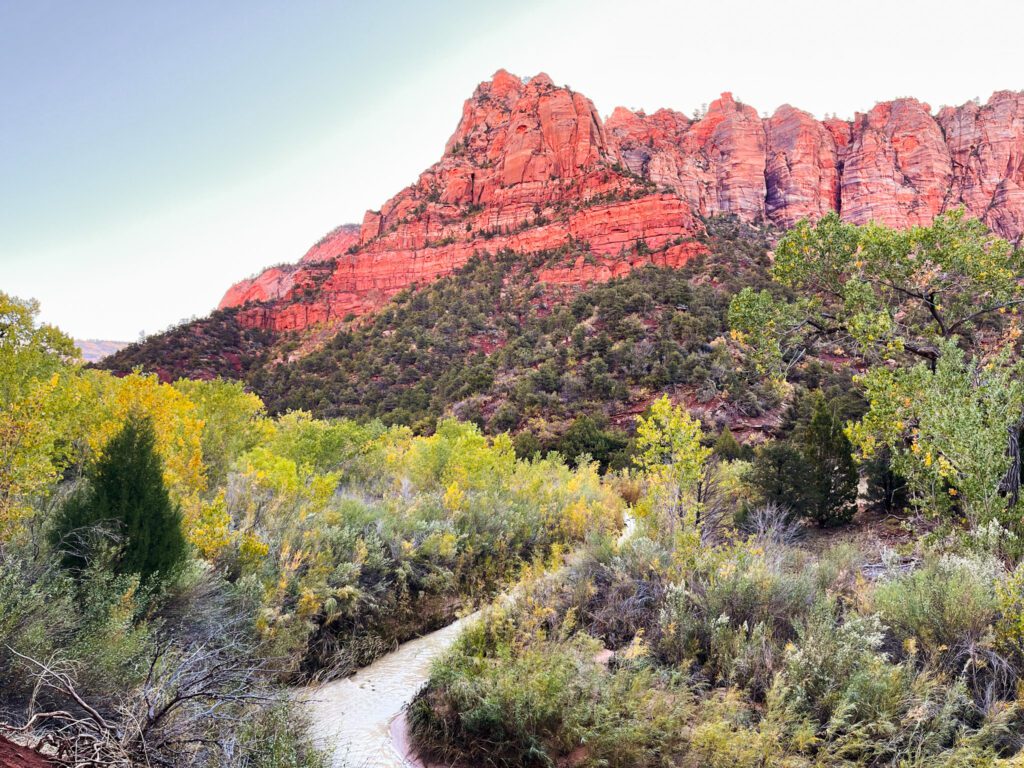

Camping on the Kolob Arch Trail
Camping along La Verkin Creek is a great way to break up the Kolob Arch trail into shorter segments. For any Kolob Canyons backpacking trip, you’ll need to obtain a Zion wilderness permit and reserve a designated campsite in advance. Campsite reservations open a few months in advance and sell out quickly! You can take a look at photos and descriptions of the campsites along La Verkin Creek here, and the reservation site is here.
Water Sources
Unfortunately, La Verkin Creek is often afflicted by cyanobacteria. Filtering and boiling are NOT effective in removing toxins from the water. Pack in as much water as you need for drinking and cooking, and only collect and treat water from springs. There are two active springs on La Verkin Creek Trail. One spring crosses the trail near Campsite 7. The other (Beatty Spring) is between Campsites 10 and 11, and you’ll need to cross the creek to access it.
Check current information on water sources and cyanobacteria status before your hike.
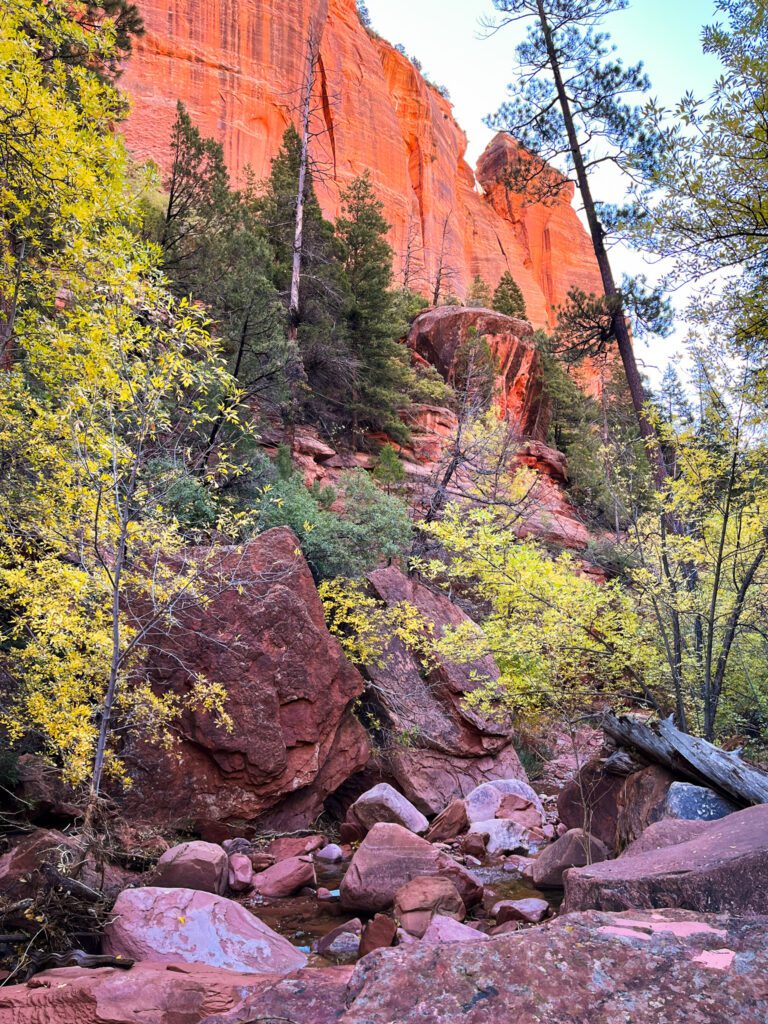

Where to Stay
The Kolob Arch trail is an hour away from Zion Canyon, which is the most popular part of the park. Below, I’ve listed accommodation options that will be convenient for visiting both Zion Canyon as well as Kolob Canyons. Accommodation near Zion sells out quickly, so book as far in advance as you can!
Zion National Park Camping
Campsites within Zion include: South Campground, Watchman Campground, and Lava Point Campground. All of the Zion campsites require reservations, which can be made 6 months in advance and sell out quickly.
Accommodation in Zion National Park
The only accommodation inside the park is Zion Lodge.
Accommodation in Springdale
Splurge:
Hampton Inn & Suites
Flanigan’s Resort and Spa
Accommodation in Hurricane
Mid-range:
Hurricane Hideaway Lodging
Wingate by Wyndham
Sleep Inn & Suites
Comfort Inn & Suites
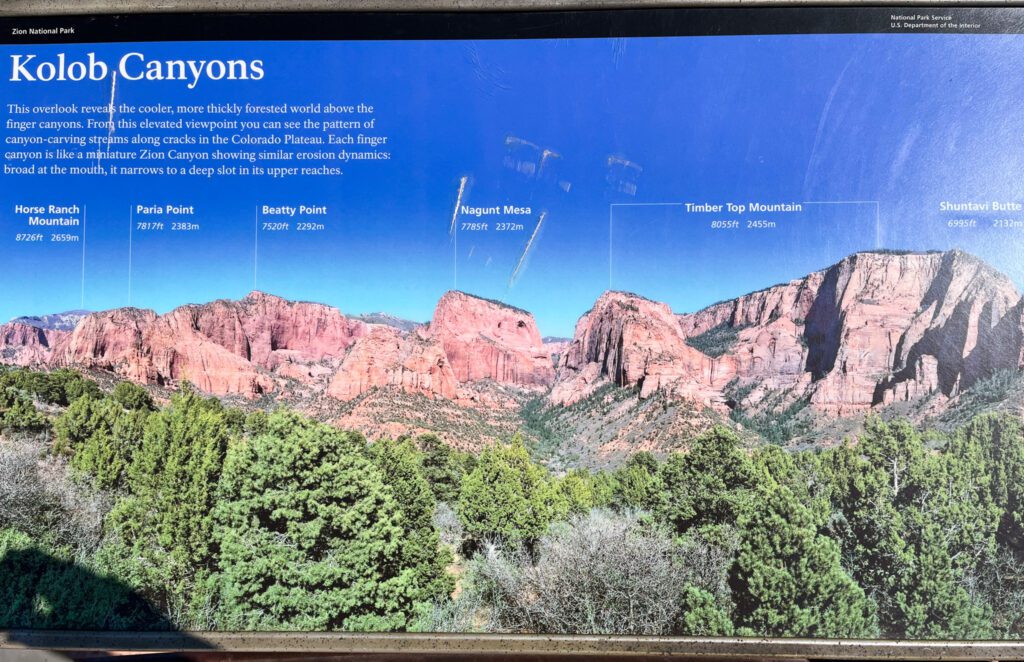

Other Things to Do in Zion National Park
The Kolob Arch hike is situated along the Kolob Canyon Scenic Drive, which spans a total of 5 miles. This road leads from the Kolob Canyons Visitor Center to the Kolob View Point. During the drive, you’ll see breathtaking views of the canyon. When you reach the Kolob View Point, consider doing an easy one-mile hike on the Timber Creek Overlook Trail for a stunning panoramic vista of the area.
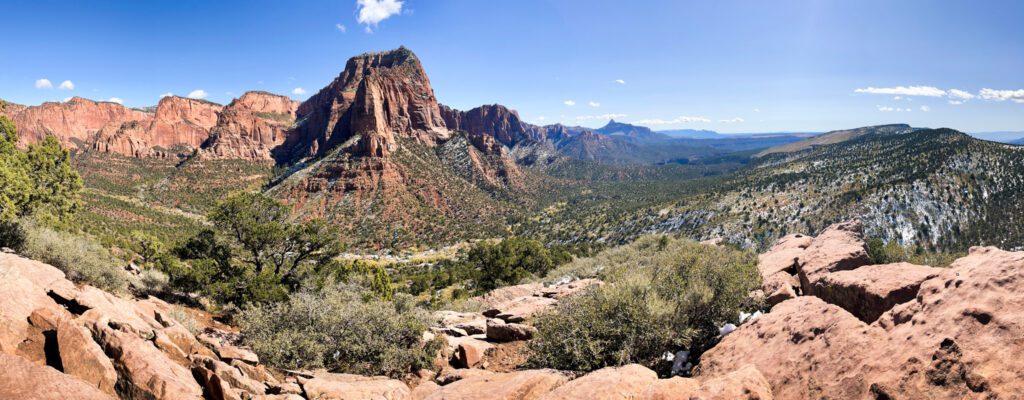

Beyond the Kolob Arch hike, Zion National Park offers numerous other attractions to explore, warranting a few days for a thorough visit. Make sure to check out the most famous section of the park, Zion Canyon. Also check out the scenic drive along Route 9 (Zion-Mt. Carmel Highway).
Additionally, consider extending your trip to include a visit to Bryce Canyon, which is just a two-hour drive away and can be explored in a day or two.
Recommended Zion Hikes:
Zion Canyon Hikes
Angels Landing and West Rim Trail
Watchman Trail
Observation Point
Checkerboard Mesa
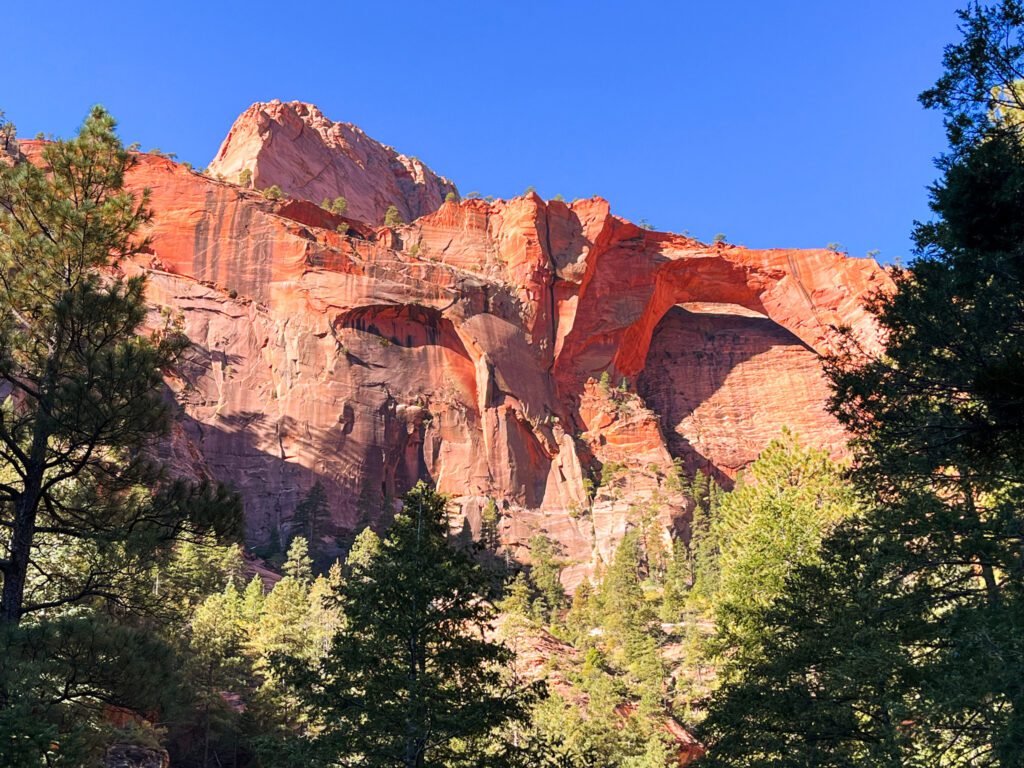

Thanks for reading, and I hope this guide to the Kolob Arch Trail in Zion National Park inspires you to explore this lesser-visited part of the park! Have you seen a natural arch before? Let me know your thoughts and questions in the comments. Happy trails!
For more places to explore, check out my guides to other hikes in Utah.
Confirm all logistical and safety information before your trip. Also If you buy through links on this site, I may earn an affiliate commission. Thanks for supporting me in creating free content for you to enjoy!
Save this post for later and share on Pinterest!
HIKING TRIP RESOURCES
Head to my Travel Resources Page for more recommendations.
Hiking Checklist and Backpacking Checklist. Make sure you have everything you need before heading out.
Viator and Get Your Guide. If you don’t want to hike or camp alone, there are various organized tours you can join, ranging from day trips to multi-day excursions.
Booking.com. This is my go-to platform for booking accommodation since it consistently gives me competitive prices and additional discounts based on usage.
LifeStraw. This easy-to-use water filter guarantees that you always have access to clean drinking water.
Travel Credit Card. Earn substantial points for travel-related expenses and a very generous bonus when opening an account.
Comments
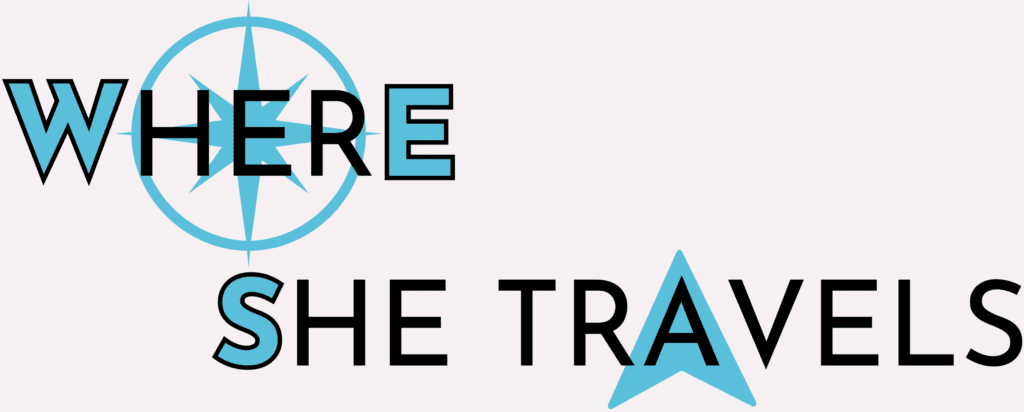



Hi, I’m Kristina! I’m a solo female traveler sharing my personal experiences around the world. Authentic travel is important to me; in my destination guides I emphasize not just the most spectacular sights but also the local stories and history.
Other things I’m passionate about are discovering hidden gems, budget-friendly travel, and hiking and backpacking. My goal is to show you how to seek adventurous experiences for yourself!

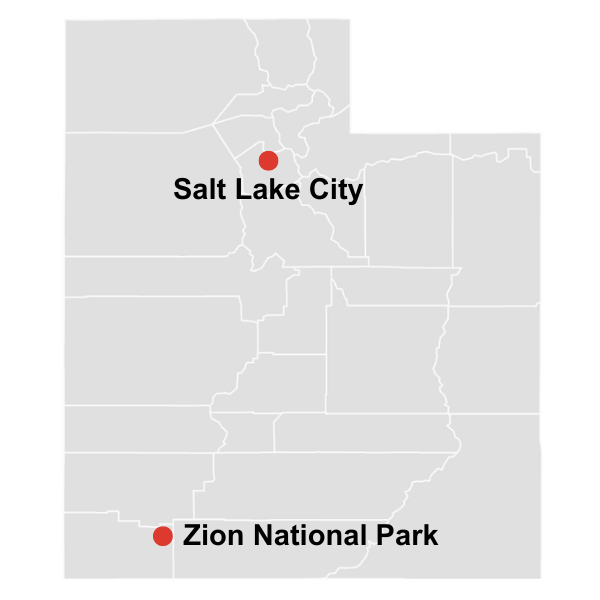
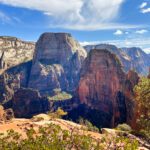
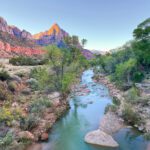
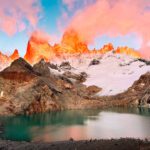
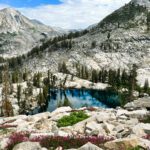
Leave a Comment